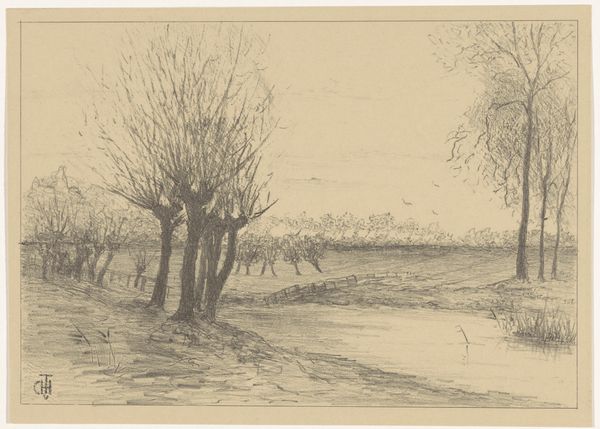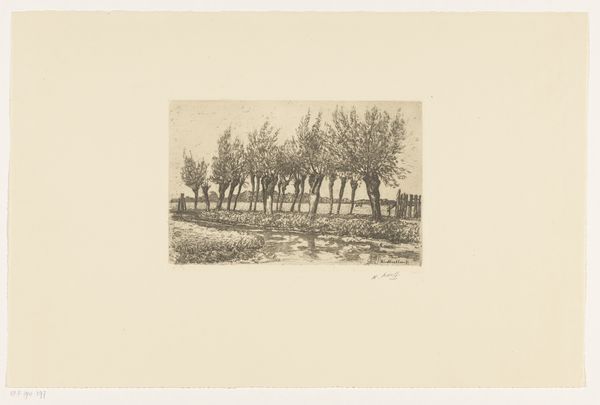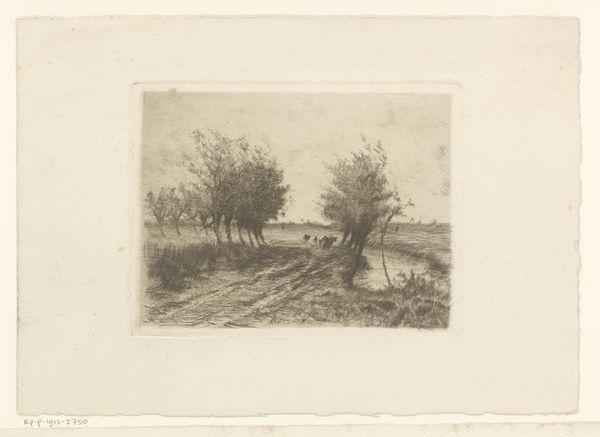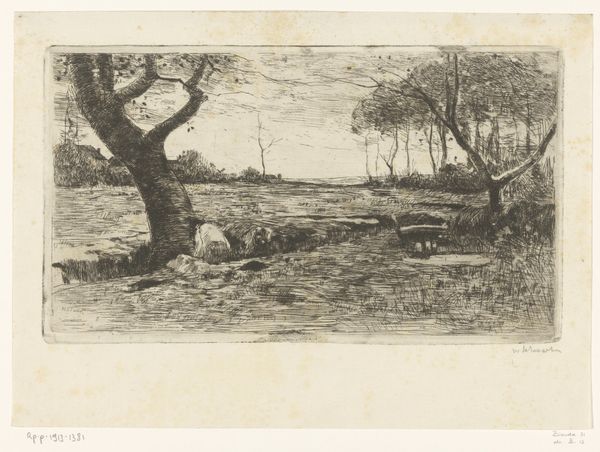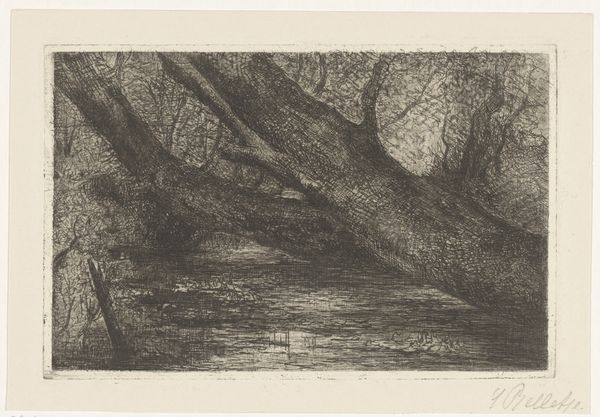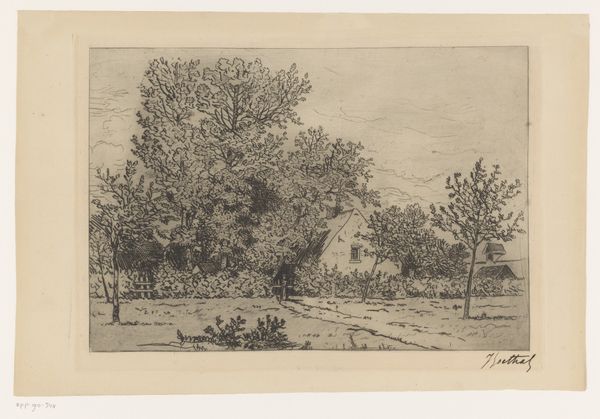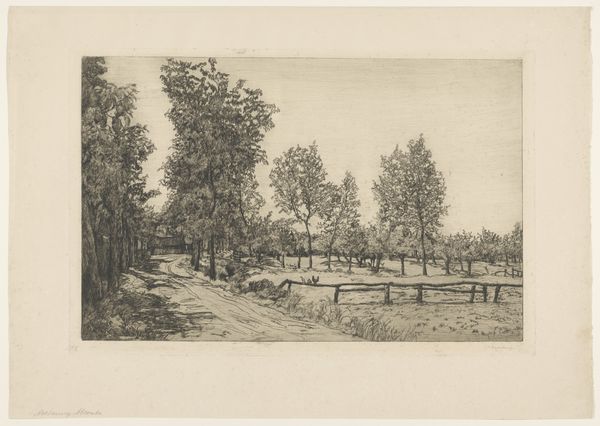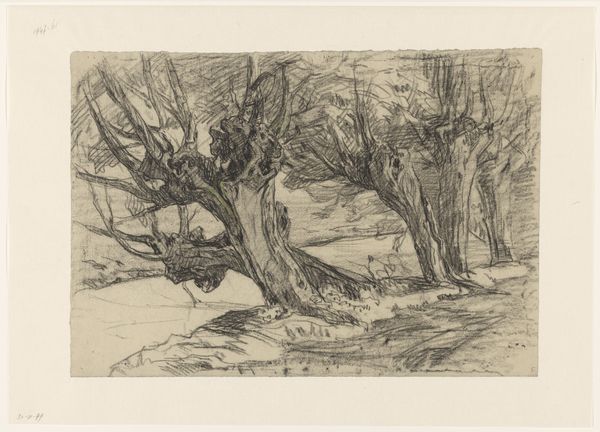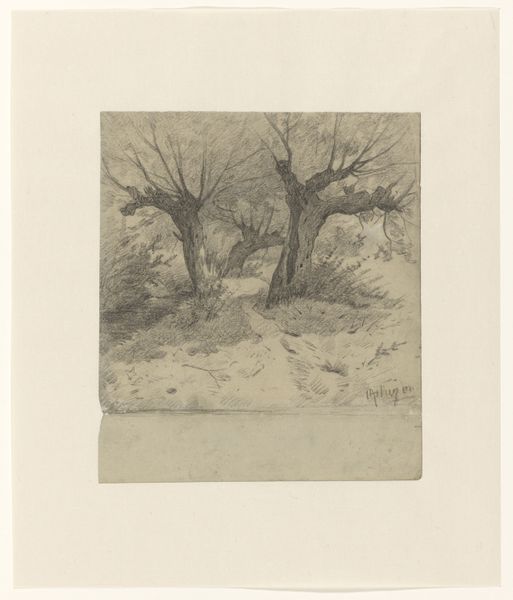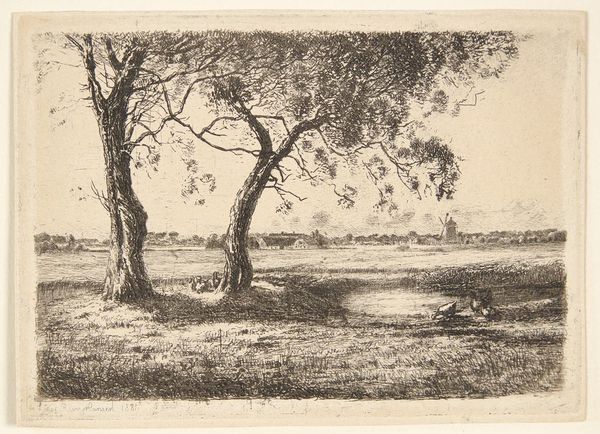
print, etching
#
dutch-golden-age
# print
#
etching
#
landscape
#
realism
Dimensions: height 234 mm, width 375 mm
Copyright: Rijks Museum: Open Domain
Curator: This is "Polderlandschap met knotwilgen," a landscape etching made by Arend Hendriks between 1911 and 1939, and held here at the Rijksmuseum. What strikes you initially? Editor: It's incredibly detailed for a print. All those little lines forming the trees, their reflections in the water… There's a kind of quiet stillness to it. It almost feels like a photograph at first glance. Curator: Considering Hendriks worked during a period of significant social upheaval, it's interesting how he chose to depict a seemingly timeless scene of the Dutch landscape. This focus can be seen as an intentional act, a desire to present an unchanging aspect of Dutch identity during modernization. Editor: Yes, and you can almost smell the damp earth just looking at it. The process of etching, scratching away at a metal plate and then pressing it to paper, seems to lend itself to capturing these elemental, tactile sensations of being in nature. The labor itself becomes embedded within the landscape, highlighting human intervention on it, or at least perception of it. Curator: Precisely. The knotwilgen, the pollard willows, are themselves evidence of a long tradition of landscape management in the Netherlands. This form of tree was essentially farmed for its wood, so it becomes symbolic for labor in rural, often poor communities, and land control that created it. It highlights the inherent power dynamic, one the artist acknowledges. Editor: Do you think he was commenting on this power? To me, the even distribution of light and the almost photographic stillness implies, to me at least, no moral commentary but just observation. Curator: It's an argument! Even as a study, I feel that his emphasis on these manipulated trees speaks volumes. Perhaps his dedication shows some type of reflection, even appreciation, of the struggle inherent. What a testament to the intricate relationships we forge with the land and how those labors manifest in our art. Editor: Absolutely, from the cutting of the etching plate to the shaping of trees for practical necessity, this piece displays the intertwining of making and living! Curator: A powerful reflection on the symbiosis.
Comments
No comments
Be the first to comment and join the conversation on the ultimate creative platform.
